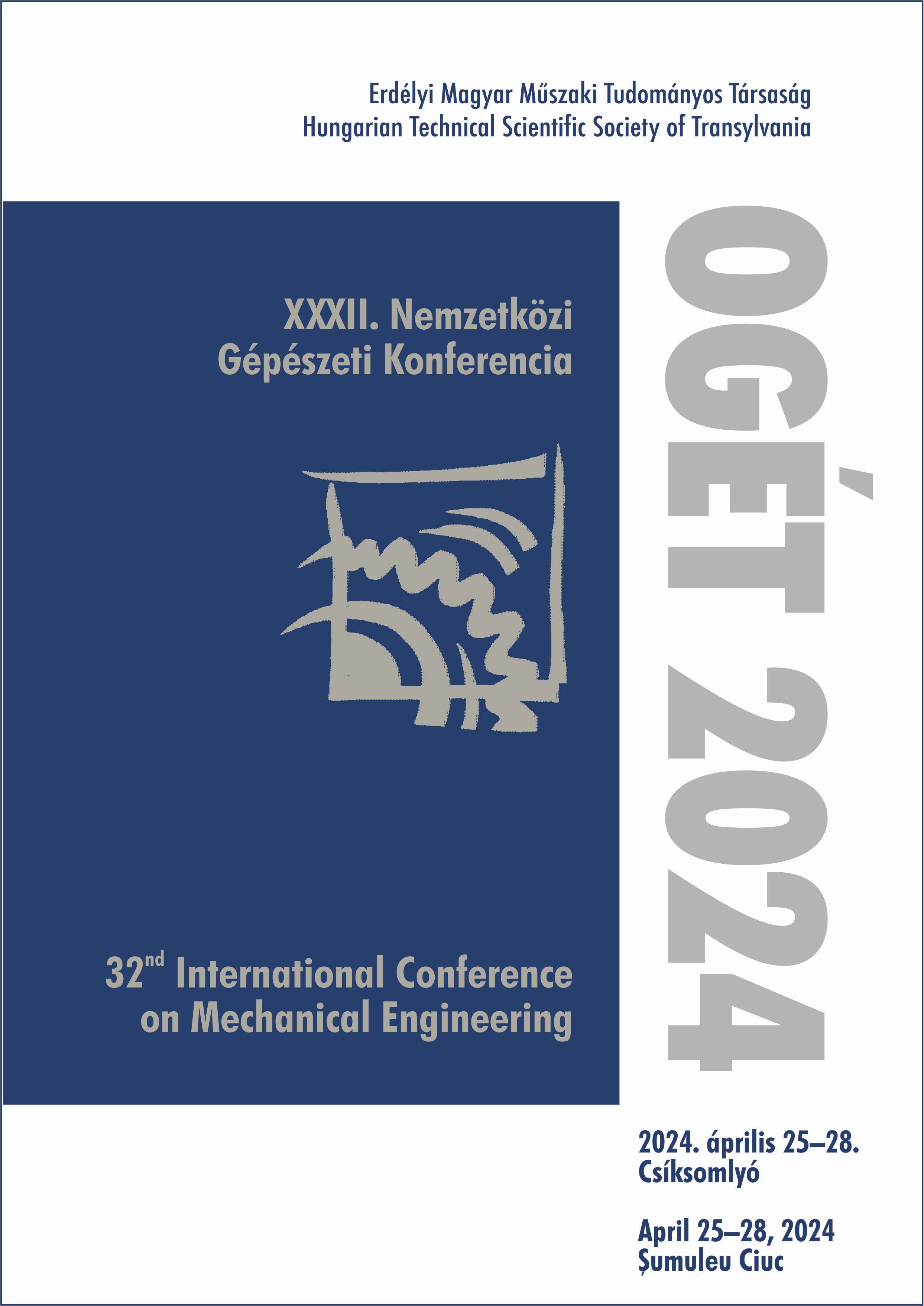Belső kitöltés hatása 3D nyomtatott alkatrészek mechanikai tulajdonságaira
Effect of different infills of the mechanical properties of 3D printed parts
Keywords:
3D printing, Mechanical testing, Simulation, Measurement, Additive manufacturing, /, 3D nyomtatás, Mechanikai anyagvizsgálatok, Szimuláció, Mérés, Additív gyártásAbstract
Nowadays, due to the extreme development of additive manufacturing technologies, there is a demand on both research and production side that these components are used as load-wearing elements for a given structure in the prototype stage, as well as in the so-called pre-production stage of the production process. Since we now have sophisticated 3D simulation program systems that can handle the material problems arising from additive manufacturing, it is possible to model the entire mechanical behaviour of the component manufactured with additive technology, as well as thermal and dimensional analysis. During the analysis, we can change the internal space filling of the material in the zones exposed to particularly high loads - thanks to the flexibility of the production technology, thereby modifying the mechanical properties, both locally and on average. As a result, it becomes necessary to create a database based on material test results, which can form the parameters related to the various internal fillings, and later a parameter system.
Kivonat
Napjainkban az additív gyártási technológiák robbanásszerű fejlődésének okán felvetődik olyan irányú igény is mind kutatási, mind gyártási oldalon, hogy ezek az alkatrészek, mint teherviselő elemek legyenek felhasználva egy adott szerkezetnél a prototípus szakaszban, valamint az ún. pre-production szakaszban a gyártási folyamatnál. Mivel ma már rendelkezünk olyan szofisztikált 3D szimulációs programrendszerekkel, melyek képesek kezelni az additív gyártából adódó anyagproblémákat, így megvalósítható az additív technológiával gyártott alkatrész teljes mechanikai viselkedésének modellezése, továbbá hőtani és dimenzióanalízise is. Az elemzések során a különösen nagy terheléseknek kitett zónákban tudjuk változtatni – a gyártási technológia flexibilitásának köszönhetően – az anyag belső térkitöltését, ezzel módosítva a mechanikai tulajdonságokat, mind lokálisan, mind átlagban is. Ezáltal szükségessé válik egy olyan anyagvizsgálati eredményeken alapuló adatbázis létrehozása, mely a különböző belső kitöltésekkel kapcsolatos paramétereket, később már paraméterrendszert alkothat.
References
Bugatti. (n.d.). Bugatti refines 3D printing to perfection. {online} https://www.bugatti.com/media/news/2021/bugatti-refines-3d-printing-perfection-with-accuracy-as-fine-as-01mm/
Hamill, S. (2020). How 3D Printing is Key to The Automotive Industry’s Future - 3DSourced. 3DSourced. {online} https://www.3dsourced.com/feature-stories/3d-printing-automotive-industry/
3D Printing in Dentistry-Sculpting the Way It Is. (2018, July 4). ResearchGate. {online} https://www.researchgate.net/publication/326173534_3D_Printing_in_Dentistry-Sculpting_the_Way_It_Is/citations
Birosz, M. T., Ledenyák, D., & Andó, M. (2022). Effect of FDM infill patterns on mechanical properties. Polymer Testing, 113, 107654. {online} https://doi.org/10.1016/j.polymertesting.2022.107654
Effect of infill pattern and infill density on mechanical behavior of FDM 3D printed Parts- a current review. (2022, March 1). ResearchGate. {online} https://www.researchgate.net/publication/359098773_Effect_of_infill_pattern_and_infill_density_on_mechanical_behaviour_of_FDM_3D_printed_Parts-_a_current_review
Hickey, K. (2021). Tensile Testing. AHSS Guidelines. {online} https://ahssinsights.org/forming/testing-characterization-forming/tensile-testing/
Johnson, G. A. (2018, July 30). Evaluation of Infill Effect on Mechanical Properties of Consumer 3D Printing Materials. {online} https://ojs.imeti.org/index.php/AITI/article/view/1010


